Those of us in the historic aircraft world with our Tiger Moths and Chipmunks, Austers and Stearmans, Hurricanes and Spitfires may be forgiven for forgetting that a number of jets flying in the skies today are equally as historic in their own way. However, they take a completely different set of skills acquired over the years – in the air and on the ground – to keep them flying. The common factor is the dedication to keep them that way.
One such jet is the Folland Gnat. To quote Martin Baker Test Pilot Stan Hodgkins, the Gnat is a “delightful, slippery, sexy, little pocket rocket” and “Folland Fun Machine”. The original Gnat was developed from the Viper-powered Folland Midge to be a lightweight fighter at a much lower cost than contemporary fighters. Folland claimed that a fully equipped Gnat would cost between 1/3rd and ½ of a standard fighter.

Ollie taxiing in
Following the type’s first flight in 1955, they were not accepted for the RAF as a fighter but were sold to India and Finland. Whilst serving in the Indian Air Force, the Gnat became known as the “Sabre-Slayer”, as a result of its aerial successes shooting down seven F86 Sabres in the Indo-Pakistan war of 1965.
Back in the UK, the Gnat was ordered as a 2-seat trainer powered by the 4,000lb thrust Bristol Orpheus engine, picked to succeed the Vampire T.11. The first Gnat aerobatic team was formed in 1964 at RAF Valley and was known as the Yellowjacks, distinctive in their bright yellow markings and in 1965 the team became the Red Arrows and they flew the Gnat until it was replaced by the Hawk in 1979. The Gnat trained more than 1400 fast jet pilots for the RAF during its service life.
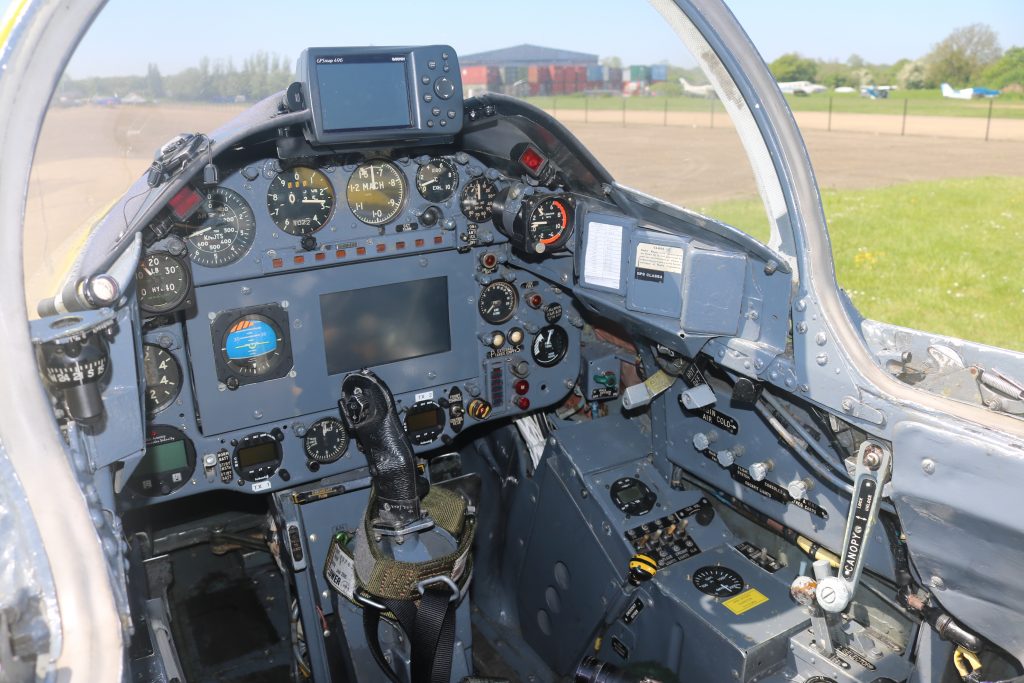
David Prince
I was recently invited by Oli Wheeldon, Historic Aircraft Association Management Committee Member – and Gnat Display Team (Heritage Aircraft Trust) Trustee and pilot – to visit the team training with Gnat XR992 (G-MOUR) at their base at North Weald. What is immediately evident is the same dedication to maintenance and training, and commitment to safety, as the historic piston aircraft fraternity.
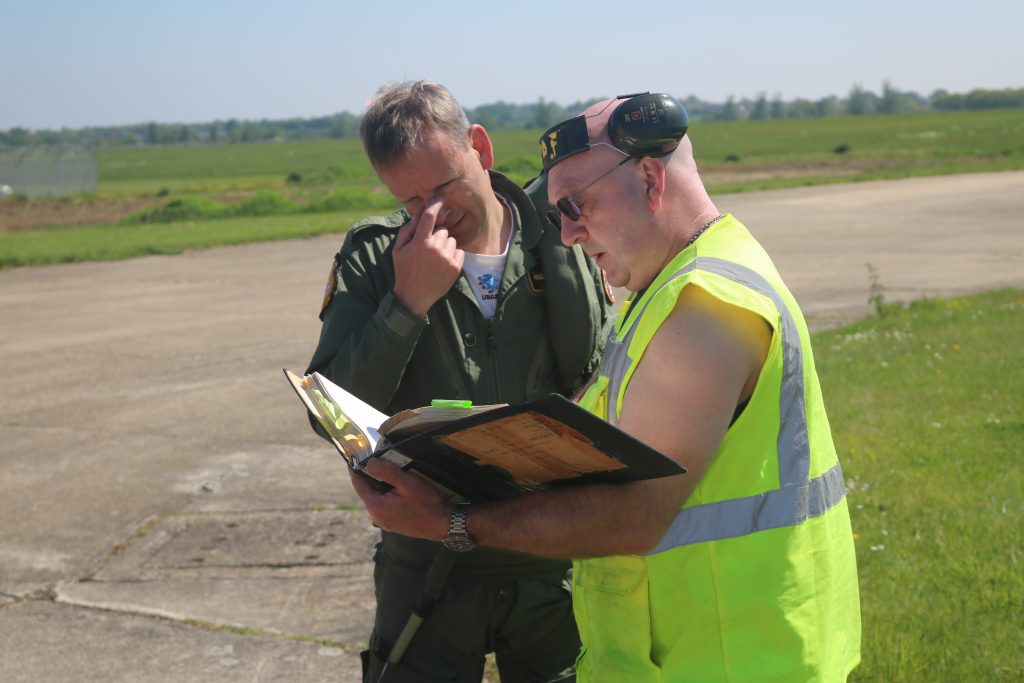
Oliver and Crew Chief
Just as important is the maintenance of type currency and having the best of instruction to enable its pilots to operate the “pocket rocket” in safety. Given the Gnat climbs to 20,000ft in two minutes, and with a top speed of 636mph, things happen very quickly. With RAF Instructors Chris Heames, Willy Hackett and Ollie Suckling – as well known in the historic aircraft world for their standards of instruction as their displays – the Gnat Display Team have the very best of support training-wise. Their mentoring and guidance role is a key part of the team ethos.
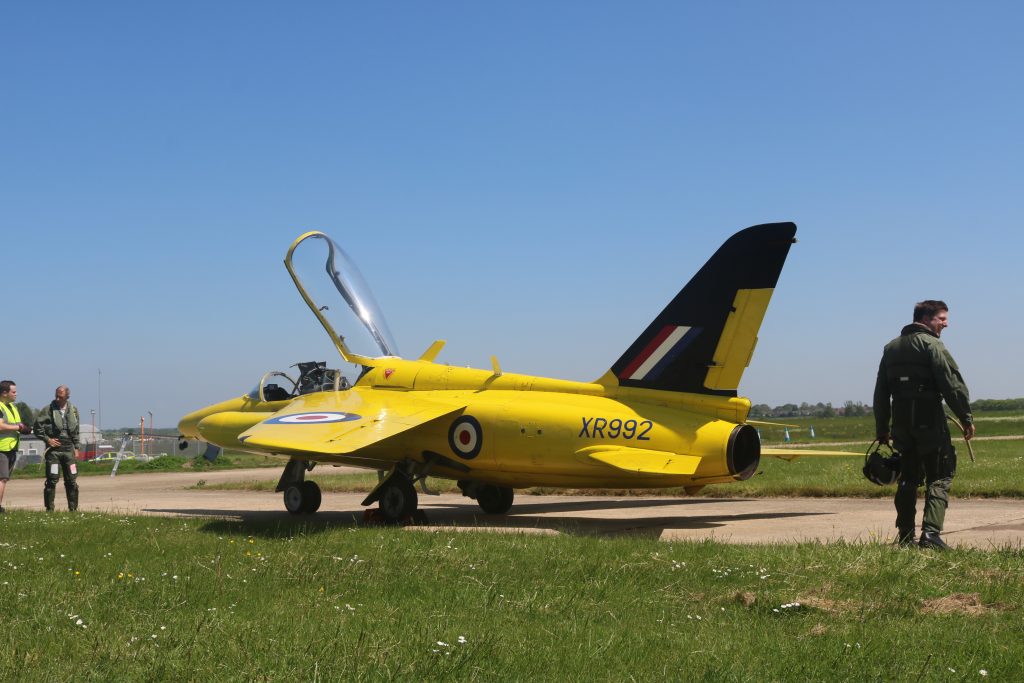
XR992 Ready to go – Willie Hackett instructing
Also critical to safe operations of the aircraft are the Team’s experienced ex-service engineers such as Nigel Fall, who is ex RAF Tornado F2, Tristar and VC 10. On the day of my visit he was assisted by Connor Holland, who is in training for his B1 Licence, thus ensuring engineering knowledge is being passed on to the next generation, such as on the day snagging and fixing the Tailplane Standby Trim.
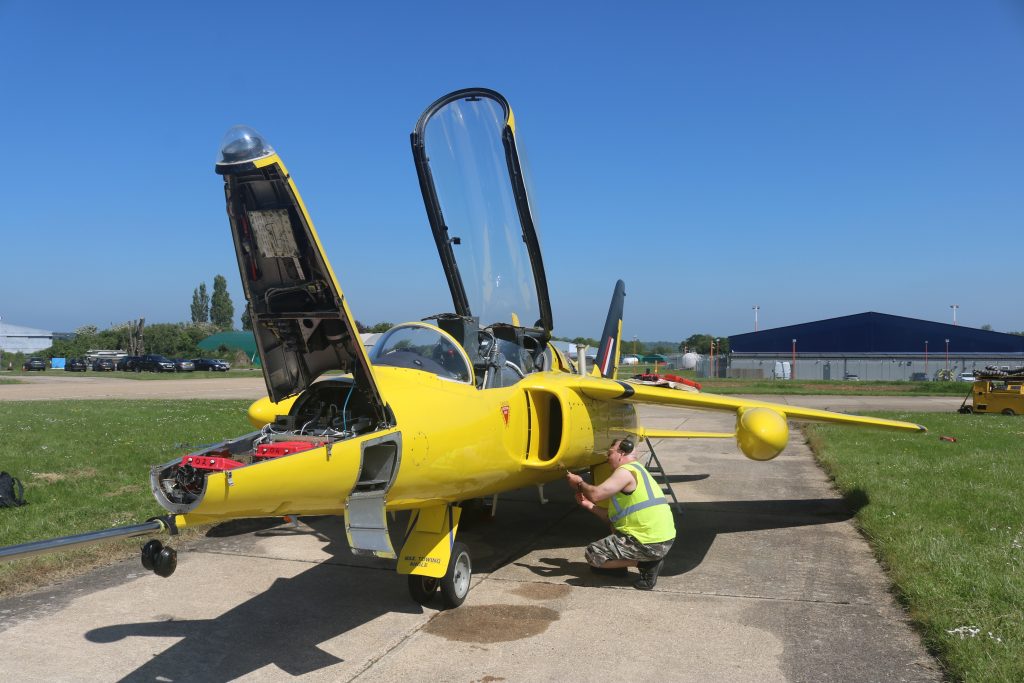
Nigel and Gnat
Also in attendance on the day was David Prince, whose father Henry was a founding member of the Yellowjacks. Henry’s Grandson Charles was there as well getting an “up close and personal” look at this historic jet classic. Nick Howarth, Rolls Royce engine designer and Director of the Rolls Royce Heritage Trust, was also enjoying a day with the team, looking ahead at his ongoing conversion to historic jets on the mighty Jet Provost Mk3 of the Classic Jet Preservation Group (also based at North Weald Airfield).
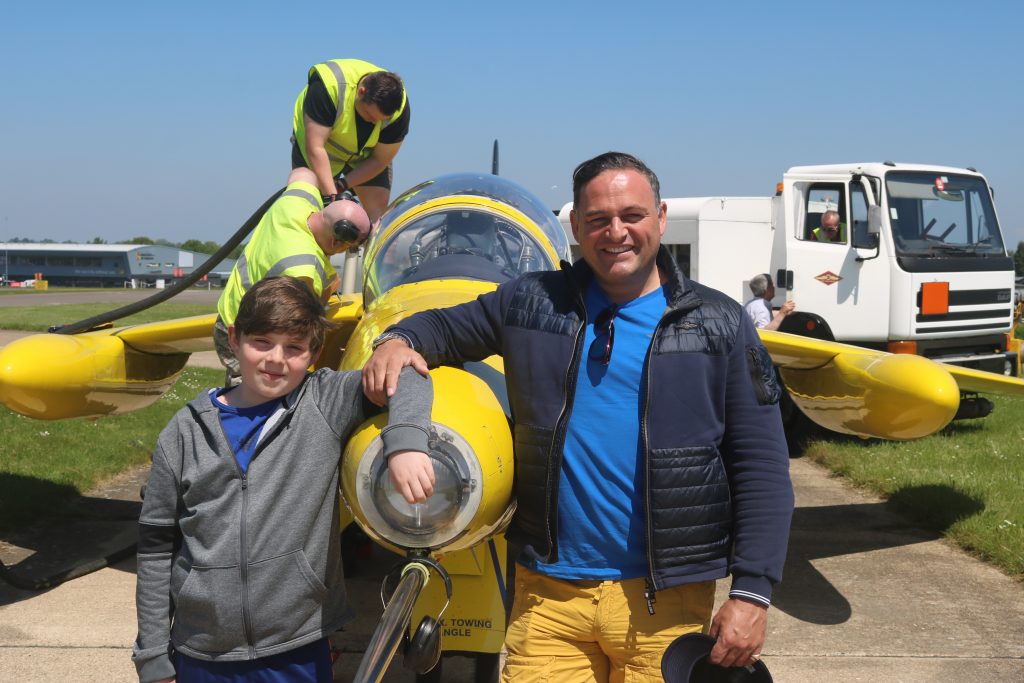
David Prince
If you get a chance to visit the historic jets at North Weald then take it. It is well worth getting a close look at the jet members of the HAA!
Howard Cook
2021

